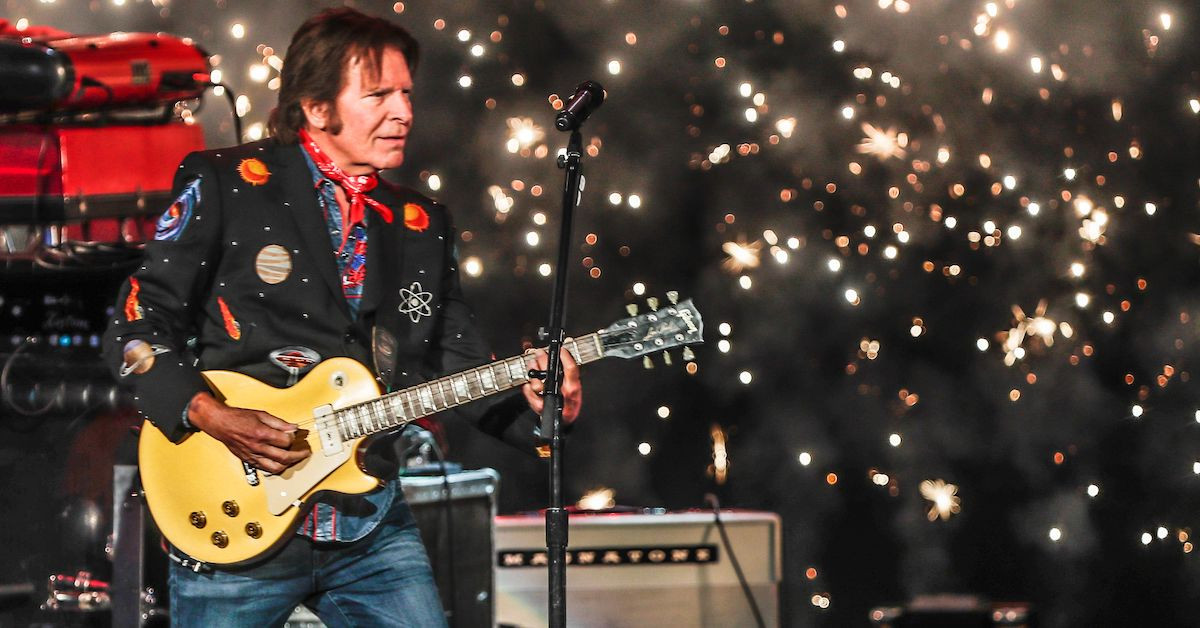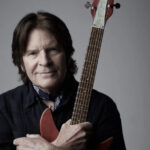 John Fogerty, the iconic musician known for his baseball anthem 'Centerfield.'
John Fogerty, the iconic musician known for his baseball anthem 'Centerfield.'
Michelle Pemberton/IndyStar
There are certain albums that hold such a special place in my heart that I intentionally avoid listening to them too often. It might sound strange, but I fear diminishing their magic. I’ve overplayed songs before, listening to them so much that they lose their ability to excite me, becoming mundane. Some music is simply too precious to risk that. I can’t imagine a world where the opening chords of In the Aeroplane Over the Sea don’t fill me with awe. That would be a profound loss. So, I reserve it for only a few listens each year. While I’m not a hoarder in other aspects of my life, this musical preservation feels worthwhile.
I often contemplate the enduring nature of music. Recently, I spent a Sunday in a New Jersey recording studio, unsurprisingly becoming the band member meticulously fine-tuning the mix. I was debating whether to add tremolo to the guitar lead or reduce the reverb on the vocals for our track “Rat Czar Czar.” (Yes, technically “Rat Czar Czar,” a song in the form of a job advertisement. I penned it when New York City sought a “Rat Czar” to tackle its rat problem. It seemed logical that the rats would, in turn, need a “Rat Czar Czar” to counter the city’s Rat Czar.) While perfection is unattainable, I wanted to minimize any future regrets about the recording. I cherish live music, but for me, studio recordings are the definitive, lasting versions of a song. They are permanent.
This brings me to a thought-provoking question Eric Nusbaum posed on Twitter: How many times has the average Major League Baseball player heard John Fogerty’s iconic baseball anthem, “Centerfield”? Eric, editor-in-chief of Seattle Met and author of the acclaimed book Stealing Home, sparked this intriguing idea. Like any good content vulture, I immediately asked Eric if I could borrow his concept. Generously, as befits a busy editor, he agreed.
“Centerfield” is practically synonymous with baseball. Its distinctive digital handclap intro is a ballpark fixture. John Fogerty, the legendary singer-songwriter of Creedence Clearwater Revival, penned and performed this hit. The song is the title track of his successful 1985 comeback solo album and became an instant classic. Fogerty himself has performed it in center field at Dodger Stadium and at his Hall of Fame induction in Cooperstown, famously playing a baseball-shaped electric guitar (perhaps symbolically unplugged). From major league stadiums to my own memories of hearing it over the press box speakers at 9-year-old regional games, “Centerfield” is everywhere. Its longevity stems from a delicate balance. It’s playfully kitschy without being irritating, catchy without being mind-numbingly so. While perhaps not reaching the artistic heights of CCR’s masterpieces, its innocuous nature makes it perfect for public settings. Most people don’t groan at “Centerfield”; if they notice it at all, it evokes a pleasant ballpark nostalgia.
Of course, a precise answer is impossible. This is a classic Fermi problem, where the goal is to make a reasonable estimate. As Caroline Chen explained in The New York Times Magazine, Fermi problems are about “estimating the right order of magnitude using nothing but common sense.” So, having borrowed Eric’s question, I attempted to solve it. As I was finalizing this article, I checked in with Eric, who guessed around 600 times. JJ Cooper, editor-in-chief of Baseball America, offered a more considered estimate of 1,000, but specifically for American-born players.
My own estimate is built from numerous smaller estimations. I tried to approximate the number of games an average player experiences at each level of baseball, from little league to the majors. Then, I estimated the percentage of games where “Centerfield” might be played. I consulted major and minor league data and other sources, and also sought input from knowledgeable colleagues to refine my estimations for each level. What follows are my best educated guesses. I encourage readers to use the comments to challenge these estimates, offer your own, or even playfully critique my musical taste.
Major Leagues
In 2023, 1,457 players played in MLB. My calculations suggest an average of 4.83 big league seasons per player. An average team plays roughly 28 spring training games, 162 regular season games, and about 1.25 playoff games, totaling around 191.38 games annually. I’m not adjusting for the shortened 2020 season, as this is a theoretical exercise, and frankly, I’m tired of factoring it into every calculation.
“Centerfield” is reportedly played before every game in Seattle and Atlanta, representing 6.67% of all regular season games. This observation is what sparked Eric’s original question – hearing the song at a Mariners game during Guardians batting practice. While not an every-game staple in all 30 parks, it’s played frequently during batting practice, between innings, or game pauses. I estimate it’s played at 12% of all MLB games.
4.83 seasons x 191.38 games x 12% of games = 110.9
Minor Leagues
I estimate an average of 4.45 minor league seasons per player. Minor league season lengths vary, but including spring training, regular season, playoffs, and fall leagues, I estimate around 80 games per player annually.
“Centerfield” likely gets played more often in the minors. Minor league baseball embraces a more lighthearted, kitschy atmosphere. Eric Longenhagen noted, “Some minor league affiliates definitely play that song every night, meaning players hear it 80 times a year. It’s played at every Fall League game in Scottsdale Stadium.” I’ll estimate 40% of the time. As Eric put it, “All it takes is someone of a certain age on the Aux cord.”
4.45 seasons x 85 games x 40% of games = 142.4
College
Spotrac’s MLB college tracker indicates 566 active players attended college, roughly 39% of all players. Most college MLB players play for about three years. Last year’s College World Series teams averaged 56.5 total games. We’ll round up to 70 to account for summer leagues like the Cape Cod League, common for MLB prospects.
I estimate “Centerfield” is played at 42% of college games, slightly more than in the minors. Initially, I considered 40%, but Michael Baumann, our college baseball expert, suggested it might be higher. Baumann also surprisingly defended the song, acknowledging its overuse and status as a minor Fogerty work compared to “Fortunate Son,” but finding it tolerable. “Which is saying something for a sports song,” he said. “Given the choice between eternal ‘Centerfield’ hell and listening to ‘The Hockey Song’ by Stompin’ Tom Connors even once, I’d choose ‘Centerfield’ without hesitation.” I hadn’t heard of “The Hockey Song” before Baumann mentioned it, and, naturally, I had to look it up on YouTube.
And I’m back. Good heavens. I lasted 12 seconds.
39% of players x 3 seasons x 70 games x 42% of games = 34.4
International Players
Now we consider high school and little league, and the distinction between American and international players. I doubt kids in the Dominican Republic or Venezuela are frequently exposed to John Fogerty. For the past several years, MLB.com has reported international players making up around 28.5% of opening day rosters. Let’s assume these international players heard “Centerfield” twice before arriving in the US.
28.5% of players x 2 = 0.6
High School and Travel Ball
Starting with the 71.5% of American-born players. Baseball America’s 2023 high school baseball team rankings show top 50 teams averaging 32.74 games. Future MLB players likely played showcases and travel or American Legion ball, so let’s estimate 52 games annually. And say 3.5 varsity seasons – these are future pros, likely multi-year high school starters.
I estimate “Centerfield” at 10% of high school games. Eric Nusbaum’s high school played it before every game, but many high schools lack PA systems, don’t play music, or avoid 80s novelty songs. Some of us didn’t even have baseball fields in high school.
71.5% of players x 3.5 years x 52 games x 10% = 13.0
Little Leagues
For our purposes, little league spans ages 9-15, unlikely to include music for younger coach-pitch games. (This includes all youth leagues, not just Little League International). Over seven years, estimate 25 games per year. This is a long season, but future MLB players likely played in all-star tournaments extending the season.
I estimate “Centerfield” at 8% of little league games. Some leagues play music constantly, and “Centerfield” is a staple. But generally, little league music is less common until all-star tournaments.
71.5% of players x 7 years x 25 games x 8% = 10
Everywhere Else
Players encounter the song elsewhere. Classic rock or country radio play it. Among 1,500 MLB players, surely one is a Fogerty superfan with “Centerfield” topping their Spotify Wrapped. Let’s assume Andrew Chafin fits this bill, for facial hair reasons. However, it’s unlikely more than one player listens this frequently by choice; they hear it enough at work.
The song appears in movies and TV, recently in a memorable Ted Lasso scene. I estimate 10 non-baseball encounters per player.
American-born players likely heard it at practices, events, and growing up as fans at pro games. Combining these, I estimate 32.9 additional encounters.
Here’s the final table summarizing our estimates:
The Final Tally
| Level | Years | % of Players | Games | % of Games | Total |
|---|---|---|---|---|---|
| MLB | 4.83 | 100% | 191.38 | 12% | 110.9 |
| Minor League | 4.45 | 100% | 75 | 40% | 142.4 |
| College | 3 | 39% | 56.5 | 42% | 34.4 |
| High School | 3.5 | 72% | 52 | 10% | 13 |
| Little Leagues | 7 | 72% | 25 | 8% | 10.0 |
| Games Attended as Fan | 15 | 72% | 2 | 20% | 4.3 |
| Various Practices and Events | – | 72% | 40 | 28.6 | |
| Other Media | – | 100% | 10 | ||
| International Players | – | 29% | 2 | 0.6 | |
| Total | 354.2 |
So, our estimate: the average MLB player has heard “Centerfield” 354.2 times. For American-born players only, it rises to 418.3.
This might seem low to many, especially those who heard it constantly in little league, high school, or MLB games. Guesses of 600 or 1,000, like Eric’s and JJ’s, might feel more accurate. Some big leaguers surely have heard it that much (and Andrew Chafin perhaps millions). But we must balance this with American players who rarely heard it and international players who may not have heard it until reaching the US.
An even harder question: how often do players actively notice hearing it? For frequent ballpark attendees, it blends into the background noise. For those living at the ballpark, this likely happens even faster. Estimating that is beyond me, so we’ll stick with the first question. Regardless of your opinion on my estimate or “Centerfield” itself, we can agree on one point: it’s far better than “The Hockey Song.”
Many thanks to Eric Nusbaum, for the original idea, and JJ Cooper, for valuable input.

